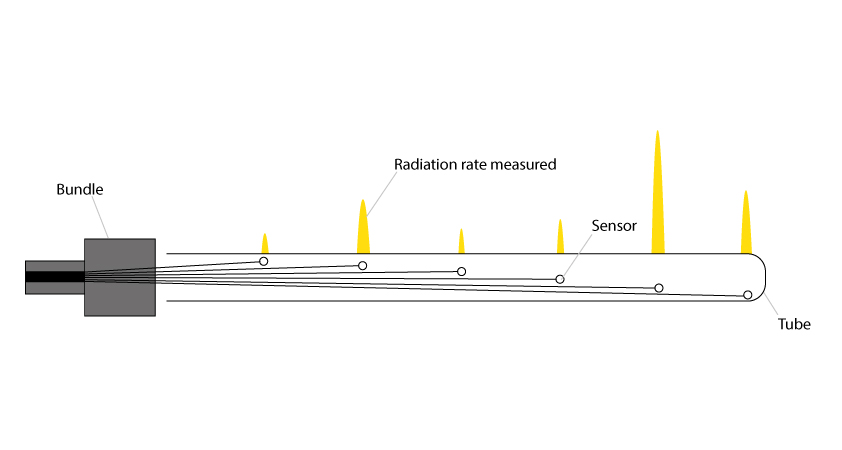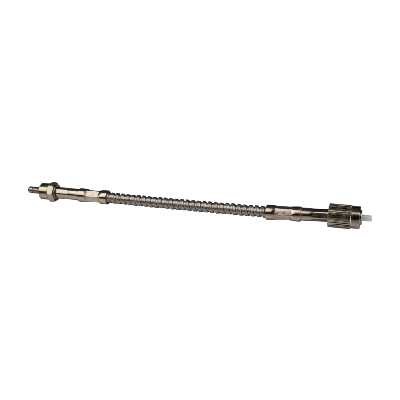RadioactivityInspection
Fiber-optic solution for nuclear clean-up and dismantling operations
SEDI-ATI took part in the project by supplying a bundle of 16-channel optical fibers for instrumentation used to measure the level of radioactivity in nuclear equipment.
MajorConstaints
The solution must be :
- Resistant to radiological and nuclear pollutants
- Resistant to dirty environments (mud, dust, etc.)
- Compact because it operates in confined environments
TheChallenge
To create a compact assembly that meets the constraints of the radioactive environment and compatible with all the facilities concerned.
The CEA’s INSPECT project
The aim of this project, developed by the CEA and selected by ANDRA with the cooperation of the ANR and the support of the future investment program, was to create a remote dosimetry instrument dedicated to radioactive investigations in places that are very difficult to access.
INSPECT is involved in nuclear clean-up and dismantling operations and can also be used to monitor radioactivity levels when storing radioactive waste. This is a major challenge for the sector, with 36 facilities currently involved, 1,000 people working on the subject and an annual budget of 750 million euros.
Miniaturized fiber-optic probes
The project involves the development of new OSL/FO (Optically Stimulated Luminescence/Fiber Optics) dosimetry instrumentation consisting of a set of sapphire crystal sensors sealed onto optical fibers sheathed in a single cord. A laser is used to measure the dose of radioactivity at a distance over a defined time range. Thanks to this solution, dosimetric profiles are established in a single measurement, saving intervention time (worker exposure) and logistical organisation time. It also makes it possible to locate the abnormal rate measured without having to send a physical person into contact with the radiation.
SEDI-ATI Fibres Optiques supplied a 16-channel octopus bundle made up of optical fibres and a custom-made watertight optical fibre feedthrough. At the end of the assembly, a thin scintillating drop will be placed, which will glow to a greater or lesser extent depending on the level of radioactivity. This light will indicate where the radiation level is abnormal, depending on the position of the sensor (scintillating tip).
Application in the PHEBUS reactor
After being tested in the pilot workshop and the UNG G1 reactor at Marcoule, the instrumentation is being tested in a “real-life” situation at this third pilot site, which is running accident scenarios.
1 INSPECT fiber bundle is inserted in an 18 mm diameter tube to pass through the ventilation grid and the casemate wall (metal shielded room) to get as close as possible to the outer wall of the shafts and measure the radioactivity on contact.
16 sensors are placed one after the other and glued to 16 different fibers, connected to a single sensor to read the 16 channels in a single integration time.

SEDI-ATISolution
A hermetic fiber optic assembly associated with a bundle of optical fibers and a custom-made fiber optic hermetic feedthrough.
AdvantagesSEDI-ATI Solution
- Remote measurement
- Compact, miniaturized solution
- Saves logistical, organisational and intervention time (worker exposure)
Related products
-
Radiation-resistant fiber optic cables
Optical fibers gather numerous advantages encouraging to integrate them in applications with radiative environments, associated with the civil, space or defense fields.





